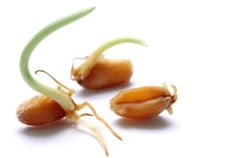CALGARY (Staff) – A mismanaged American sugar program is creating havoc for the Canadian industry, according to an official of the Canadian Sugar Institute.
“At no other time have we faced such a crisis,” said Sandra Marsden.
Propped up domestic payments at twice the world price have caused overproduction in the United States. That has led to a quota on Canadian sugar of 8,000 tonnes between January and October.
In recent years, Canada sold about 35,000 tonnes of refined bulk sugar to the U.S.
Read Also

Canadian Food Inspection Agency red tape changes a first step: agriculture
Farm groups say they’re happy to see action on Canada’s federal regulatory red tape, but there’s still a lot of streamlining left to be done
In return, the Americans sold 140,000 tonnes to Canada. Other products in the trade dispute include sugar-containing products like gelatin mixes and crystal drink mixes. Free trade exists for products that contain less than 10 percent sugar, said Marsden.
Canada is pre-sently investigating whether the U.S., South Korea and the European Union are unloading excess sugar in Canada at prices below the cost of production, a practice known as dumping.
If investigators find dumping, a duty could be triggered by June 15 with a final ruling by Sept. 13. It will be reviewed by the Canadian International Trade Tribunal to assess whether harm was done to the domestic industry, said Marsden.
Serious repercussions
If the panel says sugar is not being dumped, the industry faces serious repercussions.
“That would have very serious consequences for the industry because we can’t respond to imports by increasing exports, the logical commercial response.
“Clearly the industry would have to downsize,” she said.
For farmers like Brian Anderson of Taber this latest fight means going the distance against the powerful American sugar industry.
“If they win on sugar, they’ll just move on to the next one,” said Anderson.
The average consumer may not see the cheap sugar on the grocery shelves because 75 percent of sugar consumed by the average Canadian is found in processed foods, said Marsden.














